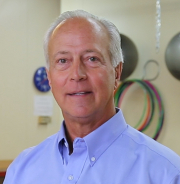Putting is often considered the most important part of the game of golf. Those who putt well on the PGA Tour usually are near the top of the leaderboard. Working on your putting stroke requires instruction and hours of practice. Professional Sports Care's data on injury profiles of PGA golfers has found 34% of players to have wrist or forearm symptoms that will require treatment. Hand injuries occur less frequently however the hand must always be assessed with forearm and wrist injuries.
An interesting aspect of these injuries is that they express pain with swinging the club and hitting balls yet the golfer experiences minimal pain with putting. It is ironic that despite the absence of pain with putting, the dysfunction in the forearm and hand musculature can effect how you putt. Gripping a golf club and hitting balls for hours will lead to tightness and dysfunction in the muscles and connective tissue of the forearms and hands. Common muscles of concern on the lead forearm are the extensor carpi ulnaris, extensor digitorum, and the brachioradialis. In the trail forearm the flexor carpi ulnaris, flexor carpi radialis, and flexor digitorum superficialis are often strained and chronically tight. You also must be aware of pronator teres compression syndrome wherein the median nerve can get compressed between the two heads of the pronator teres muscle. The median nerve supplies all the muscles on the front of the forearm except the flexor carpi ulnaris and ulnar half of the flexor digitorum profundus. Subsequent to chronic forearm tightness is the challenge of relaxing your arms and hands and feeling your contact of the ball on the putter. The "feel" the golfer wants with putting becomes distorted and elusive.
Therefore, chronic tightness and stiffness in the muscles and connective tissues of the forearms and hands can compromise the relaxed control desired in your putting stroke. As golfers age they will talk about having the "yips" in describing the jumpiness they experience in their putting strokes. Tight soft tissues do not allow the activation and reactivity of muscles to be as acute as they should be.
Advanced soft tissue procedures that are utilized by the sports medicine staff that works on the PGA golfers has often restored the strong yet relaxed control golfers expect of their forearms and hands. Neuromotor response and muscular activation improve when the contractile elements of soft tissue are restored to a more relaxed state. The "feel" described by golfers is a significant aspect of maximal performance. This improves when muscles are relaxed and free to respond to controlled commands for action.
Some of the soft tissue techniques utilized on PGA golfers by the sports medicine staff include ART (active release technique), Instrument Assisted Devices (Graston, Factr, ConnectX) and dry needling.
Even if symptoms are not present be aware of what tight muscles won't do for you. It will eliminate a lot of frustration and improve your putting performance!

